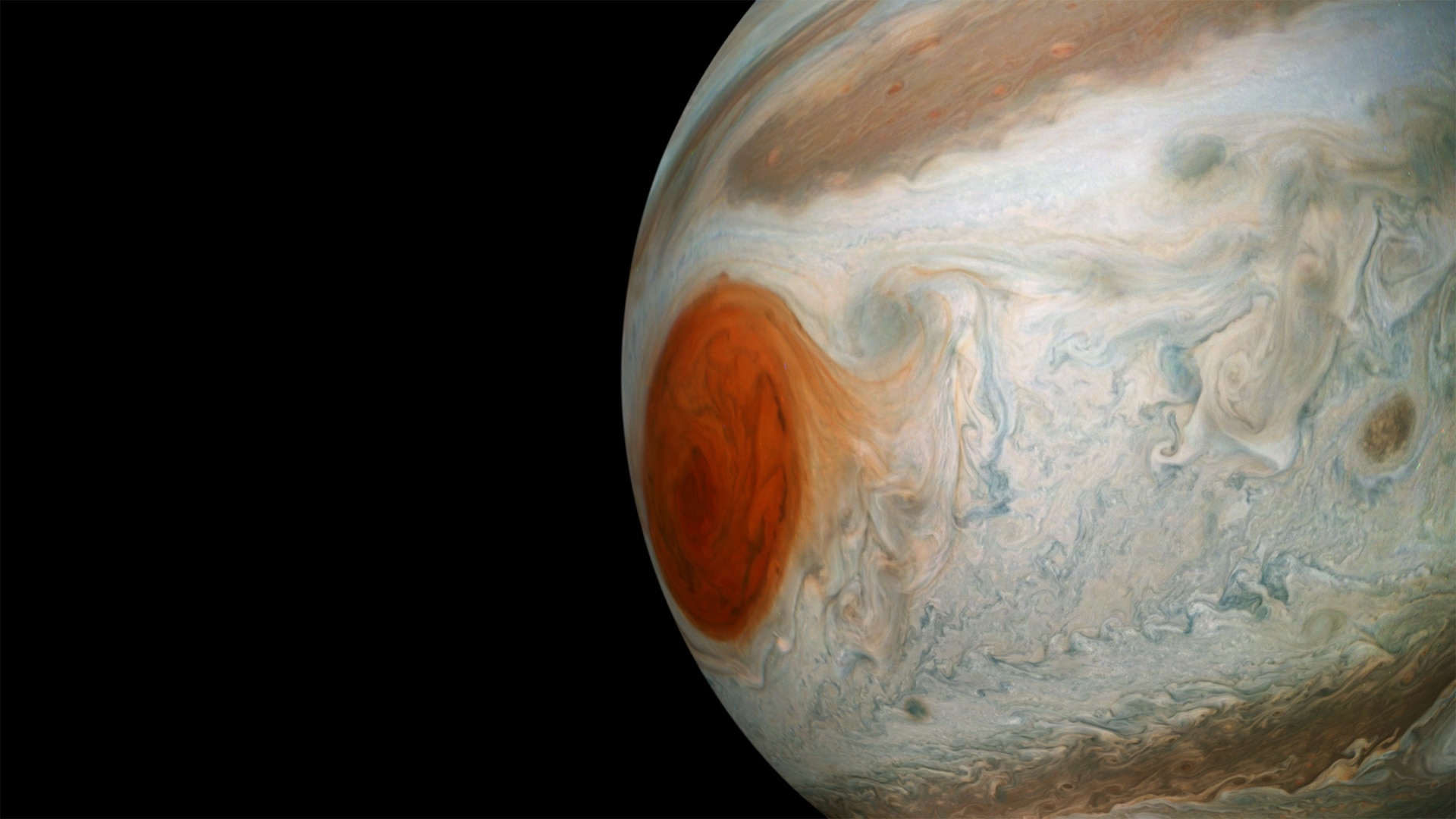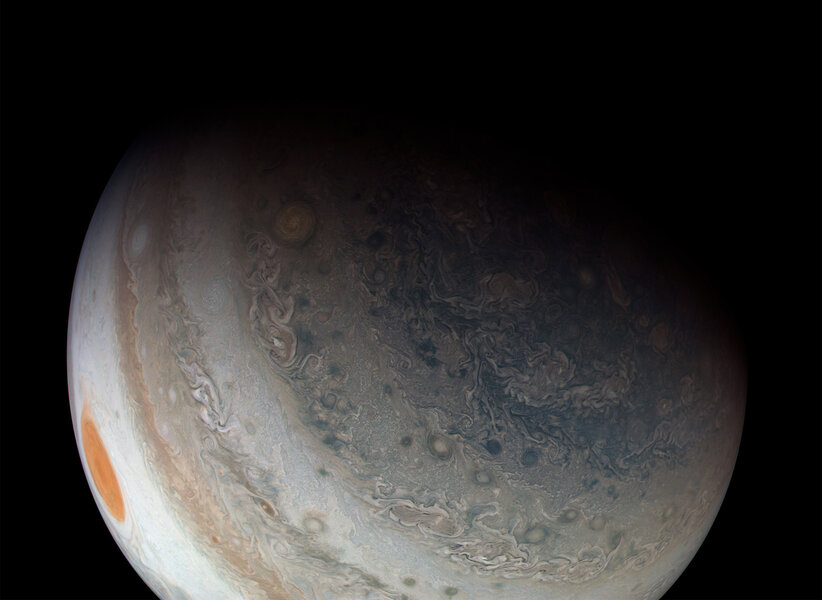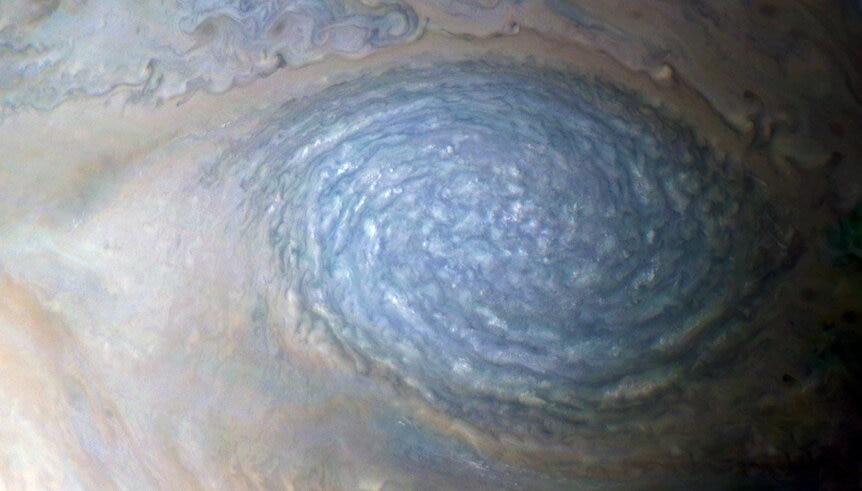Create a free profile to get unlimited access to exclusive videos, sweepstakes, and more!
Turn south at Jupiter

The Juno spacecraft at Jupiter just keeps on keepin' on.
It's been orbiting the ridiculously huge planet since 2016. It swings out as far as eight million kilometers — a long way — then dives back down for a harrowing plunge that takes it just 4,200 kilometers over Jupiter's north pole, practically parting the planet's hair. The planet is so massive that its gravity grips the spacecraft and accelerates it to 200,000 kilometers per hour.
The science we're getting back from the spacecraft is amazing. We're learning about how deep the Great Red Spot is, the forces sculpting bizarre vortices swirling around both poles, and how the thick atmosphere behaves deep inside the planet's interior. It's fascinating and very, very cool.
But oh, those images from JunoCam. This was a brilliant move by the mission designers; it's not really a scientific instrument, but instead built to take images with unprecedented detail for the public's consumption. The images are sent back to Earth and put online for anyone to see and to process, simply to show people what Jupiter is like up close and very personal.
One of the masters of creating mosaics from JunoCam is artist Seán Doran. He takes images (generally processed by Gerald Eichstädt) and does what he told me is "an aesthetic pass" over them, balancing colors and such, creating, well, artistry.
Like, say, this:
Ye GADS. Well, literally. Jupiter was, after all, a god.
This image was taken on April 1, 2018, when Juno made its 14th dive over the planet (the 12th one engaging in science), which is called Perijove 12. Juno was about 50,000 km over the southern hemisphere of the planet at the time the images used to make this mosaic were taken. The cloud bands so familiar to us in pictures taken from Earth are to the lower left (north), but give way to turbulent chaos closer to the pole. Dozens of vast storms are visible… including the iconic Great Red Spot seen near the planet's limb.
Oh, you want to see that closer? Well then, here you go:
This is a combination of three images, which is a difficult task. The spacecraft is moving so quickly that images taken minutes apart have different orientations and resolution, and show different parts of the planet. They have to be remapped to match each other and combined with care and skill.
But it pays off. Even though the Red Spot was far away from the spacecraft, the detail is amazing. I love the red cloud tendrils off to the right. As winds flow around the spot they can drag material with them, whipping it around and creating these lovely, swooping curves. You can see some of that above and below the spot as well.
Mind you, the Red Spot is roughly 16,000 km across — comfortably larger than Earth.
Speaking of big storms:
That is "Anticyclonic White Oval WS-4," which is over 3,500 km wide — bigger than our Moon. Juno was about 8,700 km above Jupiter when it took that. Look at the detail! The shadowing hints at pop-up thunderstorms in the feeder bands of the anticyclone, ranging from 10 – 20 km across, by my eye.
Storms as big as worlds. And some people wonder why I am so awed by astronomy.
There are many more images from Juno by many more people, of course. This is just a taste. But you can see more on the Unmanned Spaceflight Forum, for example, or by searching on Flickr. I will not be responsible for the time you lose poking around there.
By it's not time lost, it's never time lost, appreciating the Universe. Yes, the science is amazing, but so are the images, and it's OK to dive into either, or both. Jupiter is big enough for everything.

















